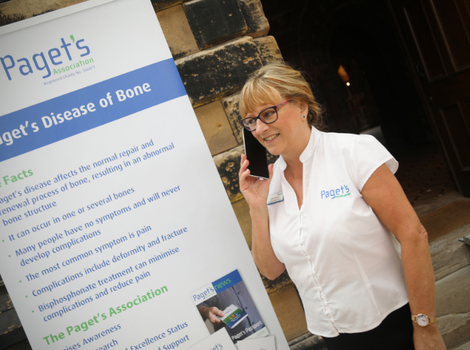Pain associated with Paget’s
Not all people who have Paget’s Disease of Bone experience pain. It is, however, the commonest presenting symptom. It is important to define the cause of pain so that the correct treatment can be given.
Who can help?
To find the best treatments for you, it is often necessary to try various options and see whether they help. Don't be frightened to ask for help when you need it. Many professionals including doctors, nurses, pharmacists, physiotherapists and occupational therapists, can all provide information and support. In the case of severe, persistent pain, it may be necessary to consider the specialist services provided by a pain management team in a pain clinic.
When you see a healthcare professional about your pain, they will need to piece together a picture of your pain, how it is linked with other medical problems that you might have and how it affects you as a person. Keeping a pain diary can be useful to see whether it reveals patterns in intensity or anything that makes the pain better or worse. It can also ensure that you are using your painkillers most effectively. You may also have questions, therefore, make a list to put to your healthcare professionals.
Help us make a difference
Your donations help us to change the lives of those with Paget’s Disease and every donation, no matter how small, is appreciated.
Membership
Become a member of the Paget's Association
Join today to unlock a world of insights into Paget's disease and support our cause.
As a valued member, you'll receive a comprehensive Paget’s Information Pack, along with our regular Paget's News magazine.
Stay at the forefront of advancements with our latest news: research, treatment and more.
Don't miss out – explore the benefits of membership now!





